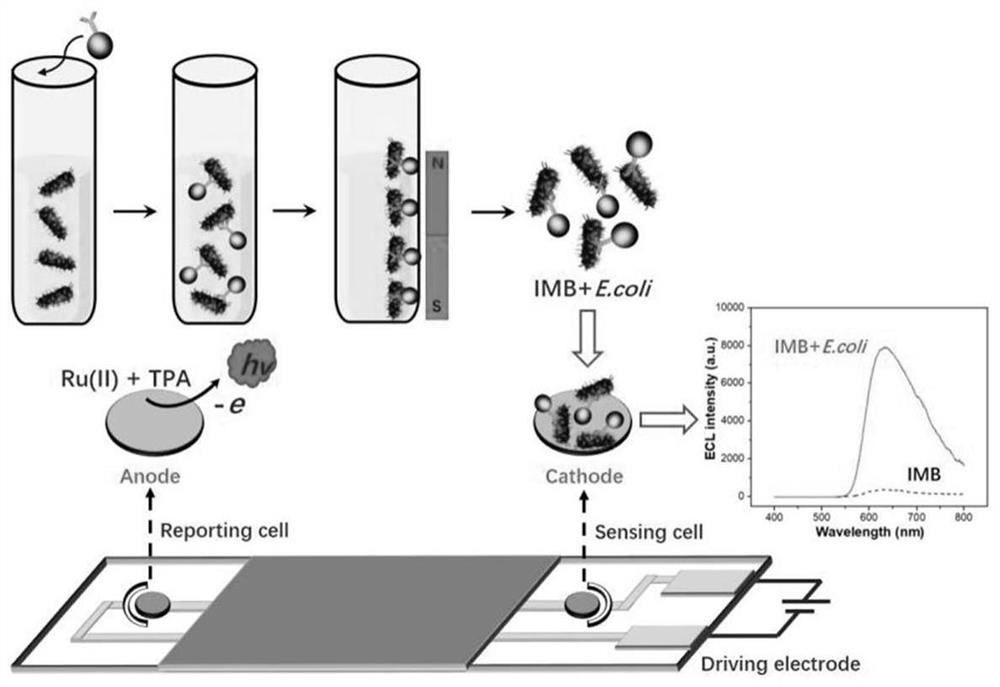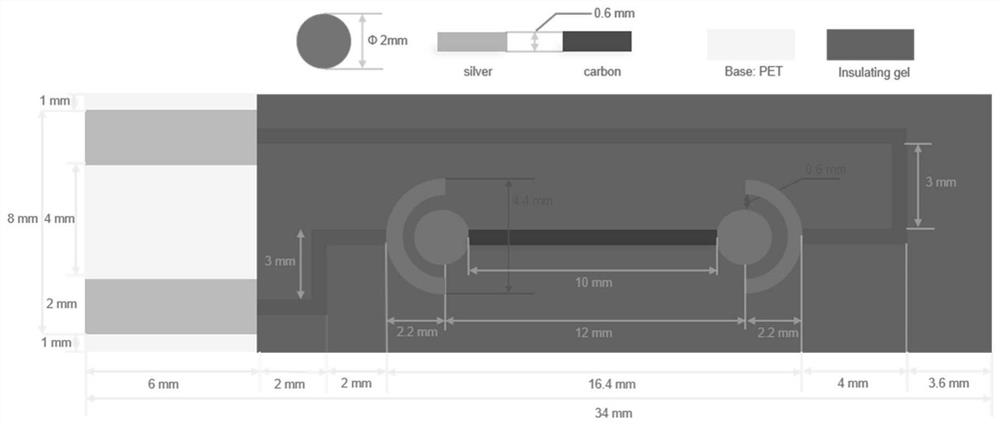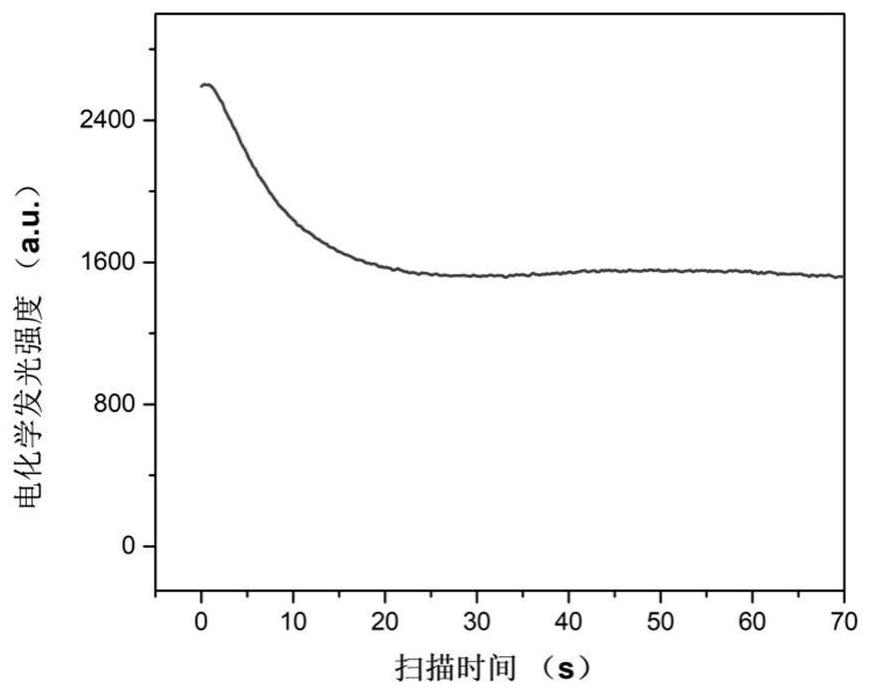Method for detecting escherichia coli based on visual BPE-ECL technology
A technology of Escherichia coli, technical detection, applied in the field of biosensing, to achieve the effect of reducing detection cost, low cost and strong specificity
- Summary
- Abstract
- Description
- Claims
- Application Information
AI Technical Summary
Problems solved by technology
Method used
Image
Examples
Embodiment 1
[0057] Example 1: Cultivation of Escherichia coli O157:H7
[0058] 1. Take out the strain Escherichia coli O157:H7 preserved in 50% (v / v) glycerol from the -80°C refrigerator. After thawing, inoculate 10 mL of LB (Luria-Bertani) liquid medium with 1% inoculum , cultivated in a constant temperature shaker at 37°C and 160rpm for 18-24h;
[0059] 2. Transfer the bacterial solution obtained above into 10mL LB liquid medium according to the same ratio, and culture at 37°C and 160rpm for 2.5h;
[0060] 3. Take 1mL of the bacterial liquid into a 1.5mL centrifuge tube, use a refrigerated centrifuge at 4°C, 8000rpm, centrifuge for 10min, and discard the supernatant to obtain bacterial sediment;
[0061] 4. Add 1 mL of sterile normal saline to resuspend the cells, centrifuge at 4°C and 8000 rpm for 10 minutes to wash away the residual culture medium, add 1 mL of sterile normal saline (0.85% NaCl) to resuspend the cells; repeat this operation for 2 Second-rate;
[0062] 5. Gradiently ...
Embodiment 2
[0063] The preparation of embodiment 2 screen printing bipolar electrodes
[0064]Firstly, polyethylene terephthalate (PET) cheap electrically inert material is selected as the substrate, and then two working electrode leads are printed with silver ink at both ends of the substrate; The carbon electrode is printed with carbon paste and dried as a bipolar electrode; then the electrode specification layer is printed with photo-curable insulating paste and cured with ultraviolet light; finally, the electrode insulating layer is printed with photo-solid insulating paste and cured with ultraviolet light. The screen-printed electrodes are about 3.4 cm long and 1 cm wide, and the bipolar electrode wires are about 12 mm long. Such as figure 2 shown.
Embodiment 3
[0065] Example 3: Electrochemiluminescent Stability Measurement of Screen-Printed Dual-Electrode Anode Luminescent Agent
[0066] 10 μL of electrochemiluminescence reagent and co-reactant (50 mM Ru(bpy) 3 Cl 2 ·6H 2 O, 250mM TPA, ready to use), drop 10 μL IMBs-E.coliO157:H7 on the cathode (wherein, the concentration of enriched E.coli O157:H7 is 10 4 ), connected to an external electrochemical workstation, applied a constant voltage of 5.5V, coupled with a fluorometer to scan at a constant wavelength of 620nm for 70s, and quantitatively detected the signal value of the anode luminescent agent, such as image 3 As shown, the luminescence value of IMBs-E.coliO157:H7 reached the peak at the beginning, gradually decreased within 25s and slowly reached a stable level, and then stabilized, so the ECL measurement was performed when the luminescence was selected for 30s.
PUM
| Property | Measurement | Unit |
|---|---|---|
| Particle size | aaaaa | aaaaa |
Abstract
Description
Claims
Application Information
 Login to View More
Login to View More - R&D
- Intellectual Property
- Life Sciences
- Materials
- Tech Scout
- Unparalleled Data Quality
- Higher Quality Content
- 60% Fewer Hallucinations
Browse by: Latest US Patents, China's latest patents, Technical Efficacy Thesaurus, Application Domain, Technology Topic, Popular Technical Reports.
© 2025 PatSnap. All rights reserved.Legal|Privacy policy|Modern Slavery Act Transparency Statement|Sitemap|About US| Contact US: help@patsnap.com



